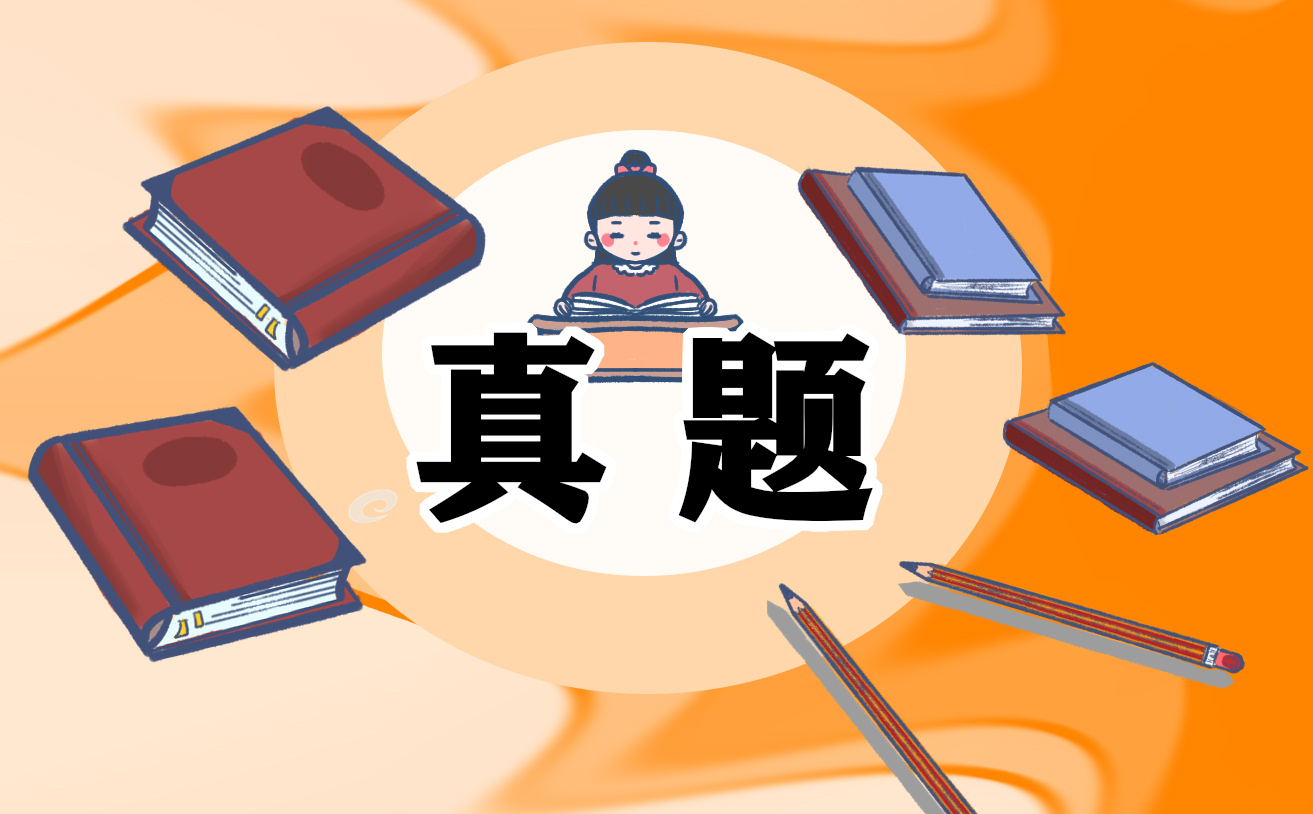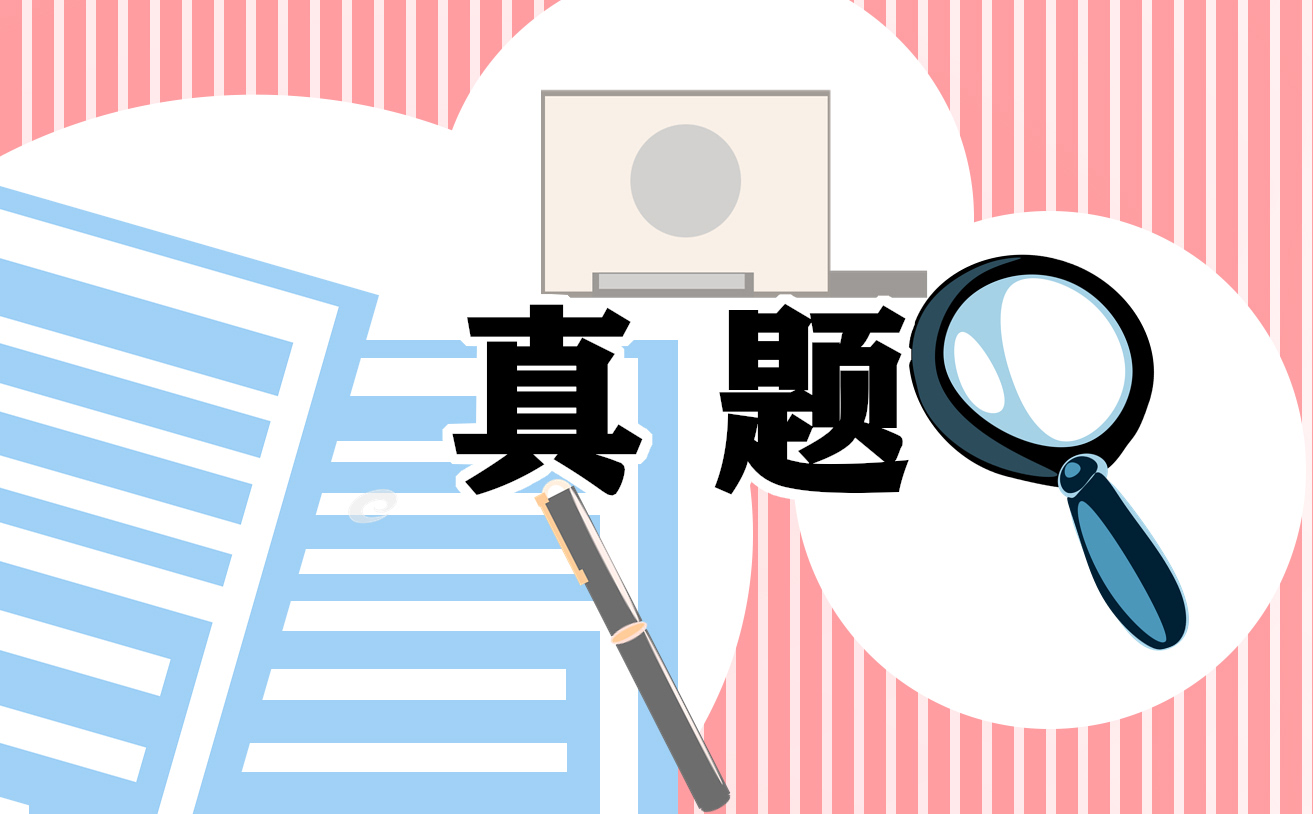阅读的顺序主要是分三步走:1、先题后文,只看题干,不看选项,避免选项干扰,寻找文章主旨2、带着文章主旨,阅读全文3、匹配问题及题型对应的解决方法。下文是小编为你精心编辑整理的英语阅读理解真题考研二级,希望对你有所帮助,更多内容,请点击相关栏目查看,谢谢!

英语阅读理解真题考研二级1
Text3
Even in traditional offices,"the lingua franca of corporate America has gottenmuch more emotional and much more right-brained than it was 20 years ago," said Ha rva rd Business School professor Nancy Koehn She sta rted spinning off examples."If you and I pa rachuted back to Fortune 500 companies in 1990,we would see much less frequent use of terms like Journey, mission,passion. There were goals,there were strategies,there were objectives,but we didn't talk about energy;we didn't talk about passion."
Koehn pointed out that this new era of corporate vocabula ry is very "team"-oriented-and not by coincidence."Let's not forget sDorts-in male-dominated corporate America,it's still a big deal. It's not explicitly conscious;it's the idea that I'm a coach,and you're my team,and we're in this togethec. There are lots and lots of CEOs in very different companies,but most think of themselves as coaches and this is their team and they want to win".
These terms a re also intended to infuse work with meaning-and,as Khu rana points out,increase allegiance to the firm."You have the importation of terminology that historically used to be associated with non-profit organizations and religious organizations:Terms like vision,values,passion,and purpose,"saidKhurana
This new focus on personal fulfillment can help keep employees motivated amid increasingly loud debates over work-life balance The "mommy wars" of the 1990s a re still going on today, prompting arguments about whywomen still can'thave it all and books like Sheryl Sandberg's Lean In,whose title has become abuzzword in its own right. Terms like unplug,offline,life-hack,bandwidth,andcapacity are all about setting boundaries between the office and the home But ifyour work is your "passion," you'II be more likely to devote yourself to it,even ifthat means going home for dinner and then working long after the kids are in bed
But this seems to be the irony of office speak:Everyone makes fun of it,butmanage rs love it,companies depend on it,and regular people willingly absorb itAs Nunberg said,"You can get people to think it's nonsense at the same timethat you buy into it." In a workplace that's fundamentally indiffe rent to your lifeand its meaning office speak can help you figu re out how you relate to yourwork-and how your work defines who you are
31. According to Nancy Koehn, office language has become________
[A]more e motional
[B]more objective
[C]less energetic
[D]less energetic
[E]less strategic
32."team"-oriented corporate vocabulary is closely related to________
[A]historical incidents
[B]gender difference
[C]sports culture
[D]athletic executives
33.Khurana believes that the importation of terminology aims to________
[A]revive historical terms
[B]promote company image
[C]foster corporate cooperation
[D]strengthen employee loyalty
34.It can be inferred that Lean In_________
[A]voices for working women
[B]appeals to passionate workaholics
[C]triggers dcbates among mommies
[D]praises motivated employees
35.Which of the following statements is true about office speak?
[A]Managers admire it but avoid it
[B]Linguists believe it to be nonsense
[C]Companies find it to be fundamental
[D]Regular people mock it but accept it
英语阅读理解真题考研二级2
Text 3
That everyone's too busy these days is a cliché. But one specific complaint is made especially mournfully: There's never any time to read.
What makes the problem thornier is that the usual time-management techniques don't seem sufficient. The web's full of articles offering tips on making time to read: “Give up TV” or “Carry a book with you at all times.” But in my experience, using such methods to free up the odd 30 minutes doesn't work. Sit down to read and the flywheel of work-related thoughts keeps spinning-or else you're so exhausted that a challenging book's the last thing you need. The modern mind, Tim Parks, a novelist and critic, writes, “is overwhelmingly inclined toward communication…It is not simply that one is interrupted; it is that one is actually inclined to interruption.” Deep reading requires not just time, but a special kind of time which can't be obtained merely by becoming more efficient.
In fact, “becoming more efficient” is part of the problem. Thinking of time as a resource to be maximised means you approach it instrumentally, judging any given moment as well spent only in so far as it advances progress toward some goal. Immersive reading, by contrast, depends on being willing to risk inefficiency, goallessness, even time-wasting. Try to slot it as a to-do list item and you'll manage only goal-focused reading-useful, sometimes, but not the most fulfilling kind. “The future comes at us like empty bottles along an unstoppable and nearly infinite conveyor belt,” writes Gary Eberle in his book Sacred Time, and “we feel a pressure to fill these different-sized bottles (days, hours, minutes) as they pass, for if they get by without being filled, we will have wasted them.” No mind-set could be worse for losing yourself in a book.
So what does work? Perhaps surprisingly, scheduling regular times for reading. You'd think this might fuel the efficiency mind-set, but in fact, Eberle notes, such ritualistic behaviour helps us “step outside time's flow” into “soul time.” You could limit distractions by reading only physical books, or on single-purpose e-readers. “Carry a book with you at all times” can actually work, too-providing you dip in often enough, so that reading becomes the default state from which you temporarily surface to take care of business, before dropping back down. On a really good day, it no longer feels as if you're “making time to read,” but just reading, and making time for everything else.
31. The usual time-management techniques don’t work because .
[A] what they can offer does not ease the modern mind
[B] what challenging books demand is repetitive reading
[C] what people often forget is carrying a book with them
[D] what deep reading requires cannot be guaranteed
32. The “empty bottles” metaphor illustrates that people feel a pressure to .
[A] update their to-do lists
[B] make passing time fulfilling
[C] carry their plans through
[D] pursue carefree reading
33. Eberle would agree that scheduling regular times for reading helps .
[A] encourage the efficiency mind-set
[B] develop online reading habits
[C] promote ritualistic reading
[D] achieve immersive reading
34. “Carry a book with you at all times”can work if .
[A] reading becomes your primary business of the day
[B] all the daily business has been promptly dealt with
[C] you are able to drop back to business after reading
[D] time can be evenly split for reading and business
35. The best title for this text could be .
[A] How to Enjoy Easy Reading
[B] How to Find Time to Read
[C] How to Set Reading Goals
[D] How to Read Extensively
英语阅读理解真题考研二级3
Text 3
Scientists have found that although we are prone to snap overreactions, if we take a moment and think about how we are likely to react, we can reduce or even eliminate the negative effects of our quick, hard-wired responses.
Snap decisions can be important defense mechanisms; if we are judging whether someone is dangerous, our brains and bodies are hard-wired to react very quickly, within milliseconds. But we need more time to assess other factors. To accurately tell whether someone is sociable, studies show, we need at least a minute, preferably five. It takes a while to judge complex aspects of personality, like neuroticism or open-mindedness.
But snap decisions in reaction to rapid stimuli aren’t exclusive to the interpersonal realm. Psychologists at the University of Toronto found that viewing a fast-food logo for just a few milliseconds primes us to read 20 percent faster, even though reading has little to do with eating. We unconsciously associate fast food with speed and impatience and carry those impulses into whatever else we’re doing, Subjects exposed to fast-food flashes also tend to think a musical piece lasts too long.
Yet we can reverse such influences. If we know we will overreact to consumer products or housing options when we see a happy face (one reason good sales representatives and real estate agents are always smiling), we can take a moment before buying. If we know female job screeners are more likely to reject attractive female applicants, we can help screeners understand their biases-or hire outside screeners.
John Gottman, the marriage expert, explains that we quickly “thin slice” information reliably only after we ground such snap reactions in “thick sliced” long-term study. When Dr. Gottman really wants to assess whether a couple will stay together, he invites them to his island retreat for a muck longer evaluation; two days, not two seconds.
Our ability to mute our hard-wired reactions by pausing is what differentiates us from animals: doge can think about the future only intermittently or for a few minutes. But historically we have spent about 12 percent of our days contemplating the longer term. Although technology might change the way we react, it hasn’t changed our nature. We still have the imaginative capacity to rise above temptation and reverse the high-speed trend.
31. The time needed in making decisions may____.
[A] vary according to the urgency of the situation
[B] prove the complexity of our brain reaction
[C] depend on the importance of the assessment
[D] predetermine the accuracy of our judgment
32. Our reaction to a fast-food logo shows that snao decisions____.
[A] can be associative
[B] are not unconscious
[C] can be dangerous
[D] are not impulsive
33. Toreverse the negative influences of snap decisions,we should____.
[A] trust our first impression
[B] do as people usually do
[C] think before we act
[D] ask for expert advice
34. John Gottman says that reliable snap reaction are based on____.
[A] critical assessment
[B]‘‘thin sliced ’’study
[C] sensible explanation
[D] adequate information
35. The author’s attitude toward reversing the high-speed trend is____.
[A] tolerant
[B] uncertain
[C] optimistic
[D] doubtful
英语阅读理解真题考研二级4
Text 3
The rough guide to marketing success used to be that you got what you paid for. No longer. While traditional “paid” media – such as television commercials and print advertisements – still play a major role, companies today can exploit many alternative forms of media. Consumers passionate about a product may create “owned” media by sending e-mail alerts about products and sales to customers registered with its Web site. The way consumers now approach the broad range of factors beyond conventional paid media.
Paid and owned media are controlled by marketers promoting their own products. For earned media , such marketers act as the initiator for users‘ responses. But in some cases, one marketer’s owned media become another marketer‘s paid media – for instance, when an e-commerce retailer sells ad space on its Web site. We define such sold media as owned media whose traffic is so strong that other organizations place their content or e-commerce engines within that environment. This trend ,which we believe is still in its infancy, effectively began with retailers and travel providers such as airlines and hotels and will no doubt go further. Johnson & Johnson, for example, has created BabyCenter, a stand-alone media property that promotes complementary and even competitive products. Besides generating income, the presence of other marketers makes the site seem objective, gives companies opportunities to learn valuable information about the appeal of other companies’ marketing, and may help expand user traffic for all companies concerned.
The same dramatic technological changes that have provided marketers with more (and more diverse) communications choices have also increased the risk that passionate consumers will voice their opinions in quicker, more visible, and much more damaging ways. Such hijacked media are the opposite of earned media: an asset or campaign becomes hostage to consumers, other stakeholders, or activists who make negative allegations about a brand or product. Members of social networks, for instance, are learning that they can hijack media to apply pressure on the businesses that originally created them.
If that happens, passionate consumers would try to persuade others to boycott products, putting the reputation of the target company at risk. In such a case, the company‘s response may not be sufficiently quick or thoughtful, and the learning curve has been steep. Toyota Motor, for example, alleviated some of the damage from its recall crisis earlier this year with a relatively quick and well-orchestrated social-media response campaign, which included efforts to engage with consumers directly on sites such as Twitter and the social-news site Digg.
31.Consumers may create “earned” media when they are
[A] obscssed with online shopping at certain Web sites.
[B] inspired by product-promoting e-mails sent to them.
[C] eager to help their friends promote quality products.
[D] enthusiastic about recommending their favorite products.
32. According to Paragraph 2,sold media feature
[A] a safe business environment.
[B] random competition.
[C] strong user traffic.
[D] flexibility in organization.
33. The author indicates in Paragraph 3 that earned media
[A] invite constant conflicts with passionate consumers.
[B] can be used to produce negative effects in marketing.
[C] may be responsible for fiercer competition.
[D] deserve all the negative comments about them.
34. Toyota Motor‘s experience is cited as an example of
[A] responding effectively to hijacked media.
[B] persuading customers into boycotting products.
[C] cooperating with supportive consumers.
[D] taking advantage of hijacked media.
35. Which of the following is the text mainly about ?
[A] Alternatives to conventional paid media.
[B] Conflict between hijacked and earned media.
[C] Dominance of hijacked media.
[D] Popularity of owned media.
英语考研二级相关文章:
★ 考研英语
★ 考研英语段落的固有模式、独句段及细节
★ 详解考研英语翻译法则之翻译五步骤
★ 考研英语快速阅读基本方法
★ 考研英语长难句:一句句突破长难句(23)
★ 考研英语长难句:一句句突破长难句(05)
★ 考研英语长难句:一句句突破长难句(17)
★ 研英长难句翻译真题词汇详解:(27)
★ 考研英语英译汉难句分类辨析之分割结构
★ 考研英语长难句:一句句突破长难句(21)
上一篇:英语阅读理解考研真题
下一篇:历年考研真题英语二阅读理解


